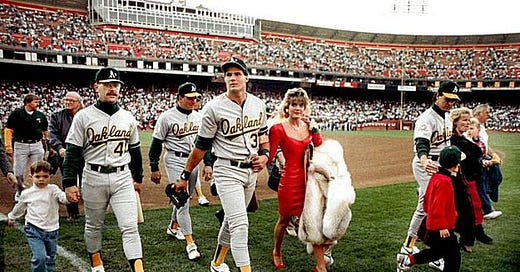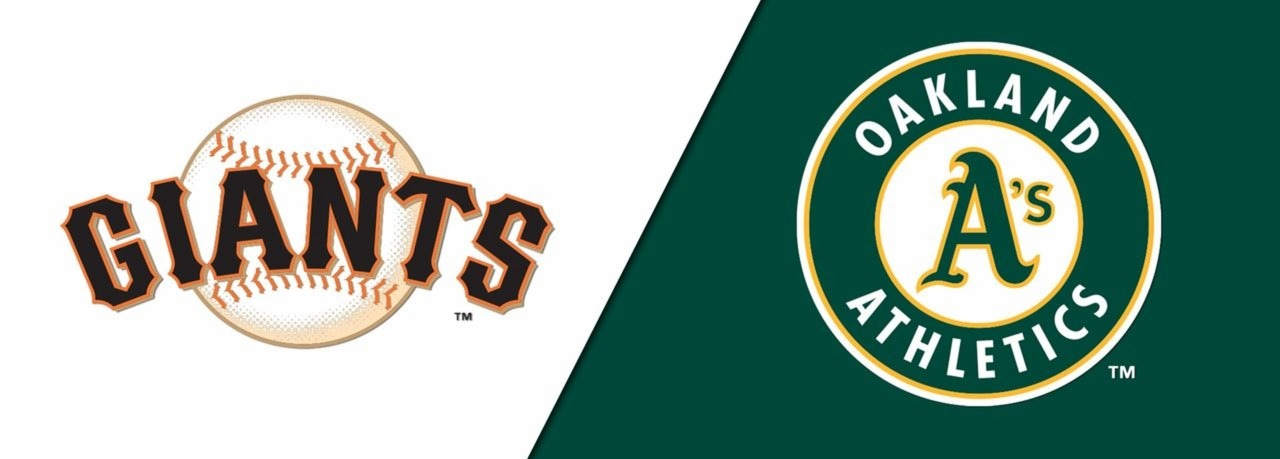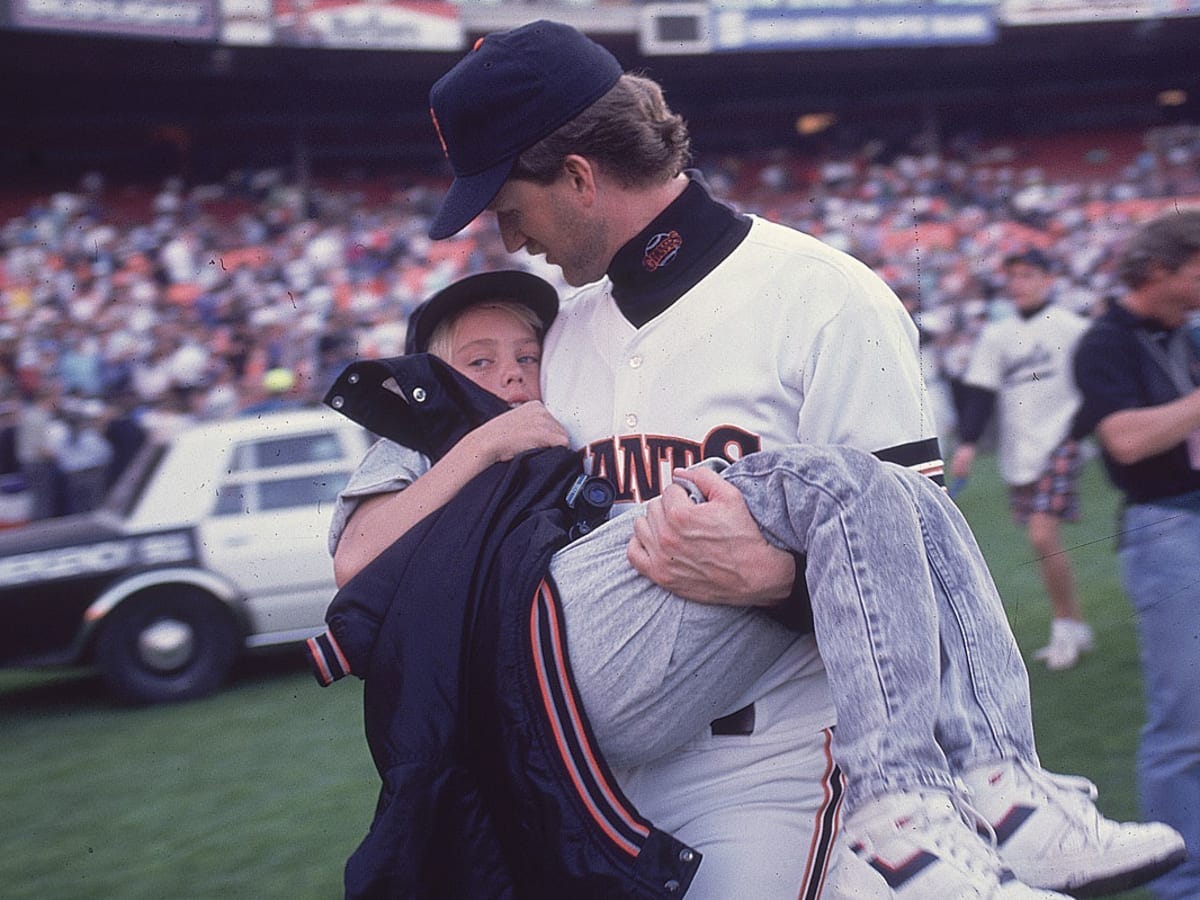October 17, 1989 - A beautiful day that turned tragic in the blink of an eye
You never know what's just around the corner that might be headed your way
October 17, 1989 was yet another beautiful fall day in my hometown of Davis, but I had no idea of the intense drama that would unfold in Northern California before this day was over.
A few dry leaves trickled down from our city-mandated front-yard hackberry tree in the early morning chill, but by mid-afternoon the temperature would reach a near-perfect 81 degrees in the shade of that same elegant tree.
I, however, would not be there to enjoy it.
Indeed, I was thrilled to be on my way to Candlestick Park for Game 3 of the Bay Bridge World Series between the Oakland A's and the San Francisco Giants.
This would be the first such championship series between these two historic franchises since 1913 when the A's were in Philadelphia and the Giants were playing in the Polo Grounds in New York.
The sports world was charmed by the uniqueness of this matchup, given that you could glance across the Bay from Candlestick Park and see the A's home field at the Oakland Coliseum.
I was in my 20th year as sports editor of the small daily newspaper in my hometown and was stunned, but overwhelmingly pleased, that I had been granted a press credential for the World Series despite the fact I was not a regular at either venue during the regular season.
I left in the late morning for the scheduled 5:35 p.m. start of Game 3, certain that traffic and parking would be a nightmare on such a grand and historic occasion.
I was right, but given the extra travel time I had allowed myself, it was easily manageable.
As I passed Berkeley and merged right onto the toll plaza for the Bay Bridge, tears spontaneously came to my eyes as I viewed the entire five miles of this historic span decorated end to end with dozens and dozens of green-and-gold Oakland A's flags and an equal number of orange-and-black San Francisco Giants flags.
It was one of those magical, wholly unexpected moments when what your eyes see bypasses the brain and goes straight to the heart.
I was so overwhelmed with pure joy that when I reached the toll booth to pay the 75 cent charge, I handed the attendant - his badge said "Bill" - two one-dollar bills, laughed, and said "I'm paying for the guy behind me and you can keep the change."
I then drove off and watched in the rearview mirror as Bill attempted to explain to the next driver what had just happened.
I arrived at Candlestick Park around 2:30 p.m., not realizing that the cherished press credential I had tucked into my shirt pocket had also earned me my very own parking spot.
Major League press boxes are not built to accommodate the hundreds of journalists from around the country who will arrive to cover an event like the World Series.
Thus, participating teams, happy for the national attention, convert part of their regular stadium seating into what becomes an open-air "auxiliary" press box.
That is where I'd be sitting.
I had already decided that rather than writing a blow-by-blow of the actual game, I was going to do a "color" piece in a column format dealing with this entire magnificent scene and what it meant to the two cities and their thousands of loyal fans.
After all, anyone who cared about the outcome was already going to be watching it on TV, listening to it on the radio or hearing about it on the 11 p.m. news.
So I spent the next several hours describing things as best I could, then called the paper and dictated those written words to a reporter on the other end - there was no email back then - and headed to the real press box just above my workspace to grab my complimentary box lunch.
In the 55 years that I ended up working for that newspaper - 20 years before the game and 35 since - I have written just over 15,000 columns.
As it turns out, the column I wrote on that day before the World Series game began is the only one that has never been published.
Yes, there's more to this story than just a wonderful and charming day at the ballpark.
For at 5:04 p.m., just as Al Michaels welcomed a worldwide audience to Game 3 of the 1989 World Series, the entire Bay Area and much of Northern California was struck by the devastating Loma Prieta earthquake that registered 6.9 on the Richter Scale.
When it hit, I was standing just inside the main press box, lunch in hand, having a brief conversation with Bill Walsh of 49ers fame.
The lights flickered and quickly died and the stadium shook violently. I grabbed a nearby railing and prayed that the concrete ceiling above me would stay put.
If I had once known what I was supposed to do in an earthquake, at this moment I had forgotten it.
A hero-type poked his head in the press box and began yelling, "Earthquake, don't panic."
Those words told me it was indeed time to panic.
I looked out to the centerfield seating, where the swaying movement caused by the earthquake made it look as if the crowd was doing The Wave.
In less than a minute, it was gone. People began smiling, then laughing.
Though some in the crowd of 62,000 fled for the exits in terror, many started clapping and cheering and, after a while, demanding "Play Ball."
This was a happening. Something to tell the grandkids about. Save the ticket stubs, for they will surely be collector's items one day.
Little did any of us in that stadium know that at that very moment dozens of people across the Bay in Oakland lay dead or dying under tons of freeway concrete.
Ultimately, 63 died in this earthquake, 42 of them in Oakland where a double-deck portion of the Nimitz Freeway (I-880) collapsed, crushing the cars on the lower deck.
A 50-foot section of the Bay Bridge collapsed, leading to another fatality. Three people died in the collapse of the Pacific Garden Mall in Santa Cruz, 60 miles away, and five more died in the collapse of a brick wall on Bluxome Street in San Francisco.
A total of 3,757 people were injured and up to 10,000 people were left homeless.
As reports of the devastation began to come in, the game was quickly cancelled and everyone was told to leave in an "orderly and responsible" fashion, and soon there were only a handful of us left.
I returned to my seat in the auxiliary press box to gather my belongings, but first I wanted to make a phone call home.
My 15-year-old son Ted had an after-school job at Jack in the Box, almost next door to the newspaper.
My 13-year-old daughter Erin was riding her bike home from school when the earthquake was felt sharply in Davis, though damage was almost non-existent.
I wanted to let them know it might be a while before I made it home, given that the Bay Bridge was closed indefinitely and the Golden Gate was also closed as a precautionary measure.
San Francisco Bay was clearly too wide for me to swim.
I grabbed the phone at my seat, but there was no dial tone. I grabbed the phone at the next seat. Also dead.
There were about 500 seats and 500 phones in the auxiliary press box, but only a handful of reporters remained.
I hurriedly went from phone to phone, hoping against hope that one of them might have a dial tone.
At last, about four rows down from my seat, I hit gold. A dial tone never sounded so good.
I called Jack in the Box and talked to Ted. I told him to bring home an extra burger or two and some fries for himself and Erin.
As we spoke, I realized that every reporter who remained in the stadium had quickly lined up behind me for their chance to call home on what appeared to be the only working phone in the entire stadium.
I quickly handed the phone to the esteemed and kind George Vecsey of The New York Times and headed out to the parking lot without a clue of when I might ever be home again.
Around midnight, however, the Golden Gate Bridge opened up and I was able to pull into the driveway under that same stunning hackberry tree around 2 a.m.
I immediately called my editor and told her it was probably best not to run that enthusiastic and flowery column I had sent earlier in the day when all seemed right with the world.
Where that column is now, only the Good Lord knows.
I'm just happy to be here 35 years later, still able to tell a story that will stay with me forever.
Reach me at bobdunning@thewaryone.com







On October 16, 1989 a friend called and offered what was billed as "An Opportunity of a Lifetime." That was the biggest understatement of my life. It resulted in my being in the nose bleed center filed seats at Candlestick at 5:04 pm. But for that invitation, I would have been on my way home to Davis after having just visited a client in Alameda. My habitual travel schedule and route would have had me on the Nimitz at the site of the collapse exactly at 5:04 pm. So while I didn't get to see a ball game that, I'm alive to appreciate this day and remember that not everyone was so fortunate.
I was based in Alameda for work, living in Davis, and had finished the work day at a site in San Rafael and headed back to the Alameda office. We thought about stopping by 7-11 for a snack which would have take about five minutes, but decided to get back sooner. We passed over the upper deck of the Cypress Structure, went through the tunnel under the channel, pulled into the rear parking lot of our building, and it hit.
We bounced around on the shock absorbers, and the dust in the lot rose up as if a strong wind had hit it. I remember thinking we couldn't be safer than in a car next to a one-story modern building. When it was over I called my mom in Palo Alto on the early cell my company provided, which luckily was on a minor carrier that was still operating. My mom was shaken, but not stirred. We weren't supposed to use the early cell for personal use, but I figured they'd let this one slide.
As we looked around, smoke rose from several areas around the Bay, but nothing like the thick black smoke that rose up nearby in Oakland. We later learned these were the burning cars that had been crushed by the Cypress Structure collapse. We timed the trip later and realized if we'd stopped at that 7-11, we probably would have been on the top deck. I've tried for years to find out what happened to those on top, to no available, but I imagine some were injured dropping 20 feet, or thrown off when one side collapsed first, or even drove under a section in front that collapsed second and and were crushed. If anyone knows, please post here.
Miraculously, no one in our office was killed, though many usually would have been commuting on the Cypress right at that time. We concluded most went home early to watch the world series and that saved many lives. One saw the structure collapse in their rear-view mirror seconds after they were on it. A vanpool I used to use saw it collapse in front of them seconds before they were to get on it. One section was reinforced for an onramp and did not collapse. A friend in Berkeley lived across the street from a man who watched the sections in front of him and behind him, but lived as he was in that one section that remained intact.
My favorite story was of one man in our office who lived in Alameda. His girlfriend worked in San Francisco, and they had a plan that if there was ever an earthquake he would take his small boat across the Bay one hour after the earthquake and pick her up at a pre-designated small dock in San Francisco. He did just that, and there she was, waiting. For those who don't remember, the Bay Bridge had a section collapse, and BART didn't run until it was inspected. This was before cell phones, and of course even today cell networks can be knocked out in a natural disaster.
I don't remember when I got back to Davis. I believe I stayed overnight or longer in Alameda as we weren't sure what the roads looked like at first. I do remember we left through the tube from Alameda to Oakland. There were large water leaks at several points in the tube, so it seemed very sketch, but it was open.